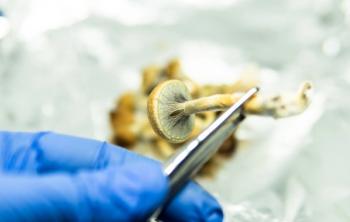
Psychedelic Daily “Vitamins”: Social Psychiatric Prediction #2
The second coming of psychedelics… what will the outcome be?
PSYCHIATRIC VIEWS ON THE DAILY NEWS
We are in what might be called the second coming of psychedelics.1 I was in college and then medical school during its first coming, and not a user.
After a tumultuous period of psychological benefits and harms in the 1960s, psychedelic legal availability was curtailed until it opened up a little over the last few years. Now, some careful research has been emerging, along with an underground citizen experimental use of microdosing. Some of this development is being fueled by investors who are funding various developments, including the transforming of plant substances into standard pill dosages.
Ketamine, which seems to have some psychedelic properties, is available because it was already approved by the US Food and Drug Administration as an anesthetic, so live and online ketamine clinics have been sprouting. However, as one of our editors recently reported,
Effectiveness is being touted for resistant depression, posttraumatic stress disorder, and undo anxiety, especially death anxiety. In underground citizen usage, memoirs tout microdosing for everyday anxiety and mild depression, as well as enhancing creativity.3 In his recent memoir, Prince Harry conveys how they helped him recover from what we now call prolonged grief disorder, stemming from his mother’s death.4 He said that the use of “magic” mushrooms and ayahuasca helped him to redefine reality. As if all these potential benefits were not enough at a time of drought in new psychiatric medications, with a supportive therapeutic setting accompanying usage, a sense of cosmic connection with others and the universe often emerges and persists to some extent. Until it was legally prohibited, MDMA (Ecstasy) was used as a supplement to enhance and speed up psychotherapy in the late 1970s.
Although this second coming of psychedelics could also fail, it is not hard to predict more ongoing success this time around. In fact, given the public’s quiet psychiatric experimentation with microdosing, would it be too much of a stretch to predict that someday they could be taken just like daily vitamins, or in terms of a psychoactive substance, like the daily cups of caffeinated coffee or tea?
Someone perhaps already predicted a version of a psychedelic future. As Hitler was beginning his rise to power, Aldous Huxley wrote the novel Brave New World, published in 1932. A psychedelic user himself, Huxley had “soma” be the tranquilizer for the masses in the book. Soma allowed an escape from reality and critical thinking, producing a strong sense of well-being and calm. Toward the end of the book, “John the Savage” rebels, focusing on soma, which he sees as an oppression tool of the state which controls a rigid class system. Gradually losing control after being in a psychiatric hospital, he ends up hanging himself. Here we have government control over having to take a psychedelic, whereas our government has turned to limiting their use, while the public has resumed experimenting themselves anyways.
Huxley’s dystopia is not the kind of sad new world we would hope for with our current psychedelics, is it? Goodness knows, in our time of authoritarianism versus democracies, and cultish control versus freedom of our minds, we might want psychedelics to open our minds and hearts, not close them.
What is the alternative? Probably only Winnecott’s “good enough” parenting that includes teaches tolerance and not undue fear and scapegoating of the other,5 coupled with political policies that support the same, with adequate psychiatric resources available to help when necessary.
Dr Moffic is an award-winning psychiatrist who has specialized in the cultural and ethical aspects of psychiatry. A prolific writer and speaker, he received the one-time designation of Hero of Public Psychiatry from the Assembly of the American Psychiatric Association in 2002. He is an advocate for mental health issues related to climate instability, burnout, Islamophobia, and anti-Semitism for a better world. He serves on the Editorial Board of Psychiatric Times™.
References
1. Moffic HS. The road less taken: the rise and fall and second coming of psychedelics. Capital Psychiatry. 2022;3(1):12-17.
2. Kuntz L. Report reveals more than 50% of Americans misuse at-home ketamine. Psychiatric Times. March 13, 2023.
3. Waldman A. A Really Good Day: How Microdosing Made a Mega Difference in My Mood, My Marriage, and My Life. Anchor; 2018.
4. Harry P. Spare. Random House; 2023.
5. Wedge M. What is a “good enough mother”? Psychology Today. May 3, 2016. Accessed March 21, 2023.
Newsletter
Receive trusted psychiatric news, expert analysis, and clinical insights — subscribe today to support your practice and your patients.













